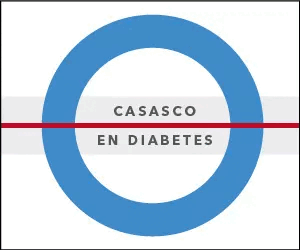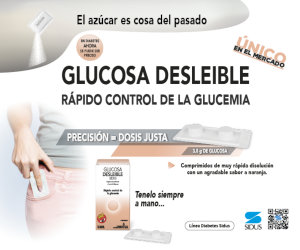Nutritional alternatives in DM1 with obesity
Keywords:
diabetes, obesityAbstract
Obesity constitutes a risk factor for autoimmune diabetes, and is linked to early clinical presentation in predisposed patients. Therefore, the reduction in the incidence of type 1 diabetes (T1D) should be considered as an additional benefit of childhood obesity prevention.
The prevalence of obesity among children and adolescents is increasing globally and people with T1D are not immune to this increase. The cause of overweight has been attributed to intensified insulin therapy with dietary freedom, in which patients determine their mealtime insulin bolus according to the amount of carbohydrates (CH) to consume, focusing more on quantity than quality, leading them to develop poor dietary habits. Added to this is the increased risk of hypoglycemia, which leads to excessive intake of simple CH, and a reduction in physical activity due to fear of hypoglycemia. In any case, there are studies that have shown that other complex factors can be the cause of overweight in this population: genetic, epigenetic, the intestinal microbiome, psychosocial and behavioral parameters, along with a modern lifestyle, characterized by unhealthy diet, lack of sleep and physical inactivity.
Overweight or obesity in a person with T1D alters not only metabolic control (due to increased insulin resistance, insulin demand, glycemic variability), but also the risk of microvascular complications. Therefore, weight management constitutes an essential component of the nutritional care of these patients.
The coexistence of T1D and obesity imposes clinical challenges regarding treatment. To date, there are no specific standardized guidelines established for weight management in this population. Regarding nutritional prescription, there is no ideal macronutrient composition. It was shown that ensuring adherence to the eating plan has a greater impact on weight loss; therefore, the proposed plan should be tailored to the clinical characteristics and preferences of each patient and their family, and should be planned to facilitate long-term adherence. It would appear that best clinical practice remains a structured program delivered by a multidisciplinary team, based on continuing therapeutic education and lifestyle changes, in which food intake, physical activity, and cognitive behavioral therapy are implemented. It is important to avoid hypoglycemia and apply carbohydrate counting and the management of foods rich in proteins and fats along with ongoing nutritional food education.
References
I. Nathan DM, Zinman B, Cleary PA, et al. Diabetes control and complications trial, epidemiology of diabetes interventions and complications (DCCT/EDIC) research group. modern-day clinical course of type 1 diabetes mellitus after 30 years’ duration: the diabetes control and complications trial/epidemiology of diabetes interventions and complications and Pittsburgh epidemiology of diabetes complications experience (1983-2005). Arch Intern Med 2009;169:1307.
II. Guías de Práctica Clínica de la ISPAD 2022. Manejo nutricional en niños y adolescentes con diabetes.
III. Facilitating positive health behaviors and well-being to improve health outcomes. Standards of Care in Diabetes-2024. Diabetes Care 2024;47(Suppl. 1):S77-S110. doi: 10.2337/dc24-S005.
Downloads
Published
How to Cite
Issue
Section
License
Copyright (c) 2024 on behalf of the authors. Reproduction rights: Argentine Society of Diabetes

This work is licensed under a Creative Commons Attribution-NonCommercial-NoDerivatives 4.0 International License.
Dirección Nacional de Derecho de Autor, Exp. N° 5.333.129. Instituto Nacional de la Propiedad Industrial, Marca «Revista de la Sociedad Argentina de Diabetes - Asociación Civil» N° de concesión 2.605.405 y N° de disposición 1.404/13.
La Revista de la SAD está licenciada bajo Licencia Creative Commons Atribución – No Comercial – Sin Obra Derivada 4.0 Internacional.
Por otra parte, la Revista SAD permite que los autores mantengan los derechos de autor sin restricciones.





































